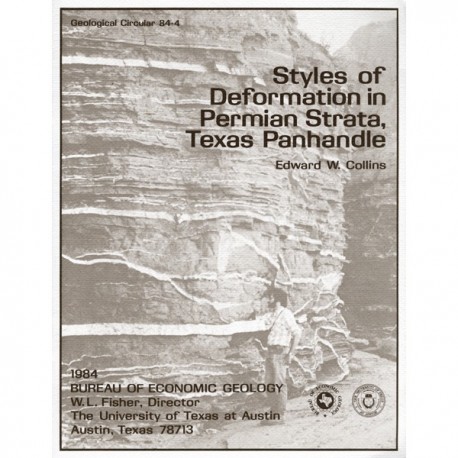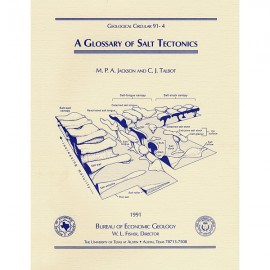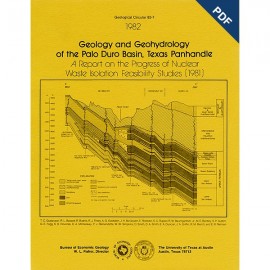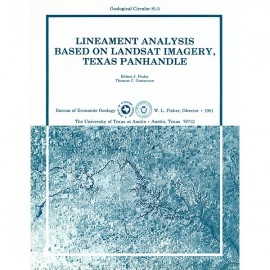Geological Circulars
-
Books & Reports
- Reports of Investigations
- Guidebooks
- Udden Series
- Geological Circulars
- Down To Earth
- Atlases of Major Oil and Gas Reservoirs
- Texas Memorial Museum Publications
- Environmental Geologic Atlas of the Texas Coastal Zone
- Mineral Resource Circulars
- Other Reports
- Seminars and Workshops
- Handbooks
- Submerged Lands of Texas
- Symposia
- Annual Reports
- Open File Reports
-
Maps & Cross Sections
- Thematic Maps
- Miscellaneous Maps, Charts & Sections
- Geologic Atlas of Texas
- STATEMAP Project Maps
- Geologic Quadrangle Maps
- Cross Sections
- Highway Geology Map
- Energy and Mineral Resource Maps
- Shoreline Change and Other Posters
- Wilcox Group, East Texas, Geological / Hydrological Folios
- Bouguer Gravity Atlas of Texas
- River Basin Regional Studies
- Featured Maps
- Posters
- Teachers & the Public
-
Geological Society Publications
- Gulf Coast Association of Geological Societies
- Alabama Geological Society
- Austin Geological Society
- Corpus Christi Geological Society
- Houston Geological Society
- Lafayette Geological Society
- Mississippi Geological Society
- New Orleans Geological Society
- South Texas Geological Society
- GCS SEPM Publications
- Historic BEG & UT Series
Styles of Deformation in Permian Strata, Texas Panhandle
GC8404
A free, digital version of this publication can be found on: Texas ScholarWorks
GC8404. Styles of Deformation in Permian Strata Texas Panhandle, by E. W. Collins. 32 p., 24 figs., 1984. ISSN: 0082-3309. Print.
To purchase this publication as a PDF download, please order GC8404D.
ABSTRACT
Permian strata in the Texas Panhandle exhibit a variety of deformation styles that are attributed to tectonic stresses as well as to collapse caused by evaporite dissolution. At Caprock Canyons State Park, deformation structures above salt dissolution zones include veins, faults, and folds. The geometry and distribution of the structures indicate that systematic regional joints older than the dissolution collapse have influenced salt dissolution. At Palo Duro Canyon State Park, subparallel cylindrical folds and minor reverse faults indicate east-northeast and west-northwest (075°to 255°) compression related to regional folding. Evaporite dissolution and subsequent collapse of strata have also deformed Permian strata and developed closed synclinal depressions, faults, and veins. Along the Canadian River valley in Potter County, Permian and Triassic strata are folded over fault-bounded basement highs as the result of either differential compaction or recurrent motion on basement faults. Synclinal depressions, clastic plugs, and clastic dikes caused by dissolution-induced collapse processes also occur throughout this area.
Keywords: Texas Panhandle, Permian, structure, fractures, folding, salt dissolution
Citation
Collins, E. W., 1984, Styles of Deformation in Permian Strata, Texas Panhandle: The University of Texas at Austin, Bureau of Economic Geology, Geological Circular 84-4, 32 p.






